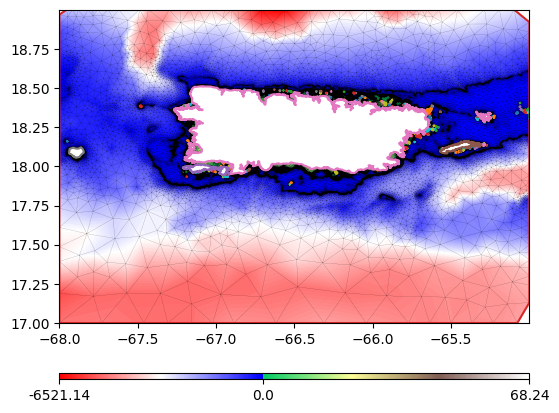It is highly recommended that you run this software using a Python virtual environment, and that you use Python>=3.6 (preferrably, using the latest available Python version is encouraged). You may use conda or venv to satisfy this dependency.
To install, clone this repository, and navigate into it:
git clone https://github.com/schism-dev/pyschism
cd pyschismThen make sure to activate the target Python environment (this step is not necessary if you chose not to use a virtual environment). After making sure your target environment is active, you can install the package using pip:
pip install .If you are a developer, you may install in developer mode instead:
pip install -e .plot_mesh /path/to/hgrid.gr3 --plot-boundaries --plot-elementsHint: You can test the library functions from the command line (without having to write a .py file) by using python -c and wrapping the commands between a pair of quotes, for example:
python -c "
from pyschism.mesh import Hgrid
print(Hgrid.open('/path/to/hgrid.gr3'))
"from pyschism.mesh import Hgrid
hgrid = Hgrid.open('hgrid.gr3')
hgrid.make_plot(show=True)# open mesh as example above
from pyschism.mesh import Hgrid
hgrid = Hgrid.open('hgrid.gr3')
hgrid.write_boundaries("/path/to/output/dir", overwrite=True)# NOTE: 2dm files can be read by QGIS > 3.0
from pyschism.mesh import Hgrid
hgrid = Hgrid.open('hgrid.gr3')
hgrid.write("/path/to/output/file.2dm", fmt='2dm')